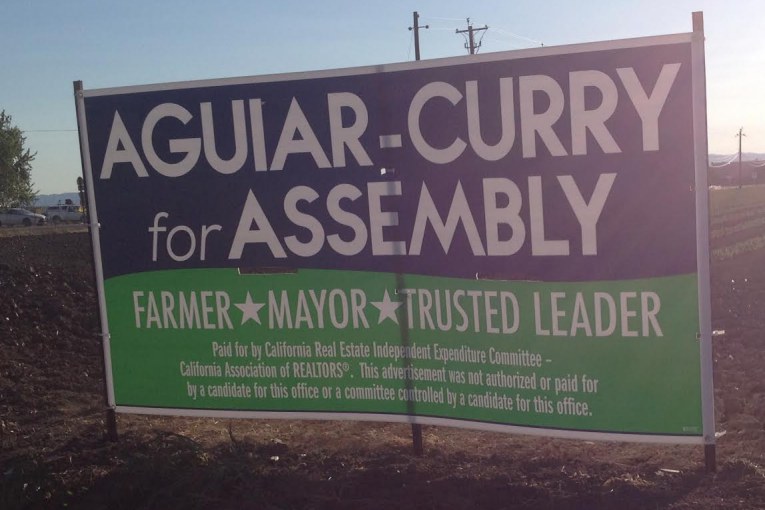

By Leanna Sweha
Independent expenditure (IE) only committees – better known as ‘Super PACs’ – have spent gobs of money in the local legislative races. Clearly, Super PACs stand to impact the 2016 races in unprecedented ways.
The US Supreme Court’s 2010 Citizens United opinion paved the way for Super PACs. How does the Court’s ruling square with what we have seen so far in our local races?
Before Citizens United, corporations could still make IEs, they just had to form separate organizations (PACs), which in turn had limits on who could contribute to them and how much they could contribute. Citizens United (and a subsequent federal case) eliminated the need for a separate organization and eliminated contribution limits.
Today, PACs can be set up by corporations (both for-profit and non-profit, including labor unions) and can accept unlimited contributions from corporate treasuries. Hence, the ‘Super PAC.’
Citizens United relied heavily on Buckley v. Valeo, a 1976 opinion famous for defining campaign money as political speech under the First Amendment. In Buckley, the Court looked at whether the campaign contribution and expenditure limits set up by the 1974 Federal Election Campaign Act were constitutional.
The Buckley Court upheld limits on campaign contributions, because it was concerned about actual and apparent quid pro quo corruption – basically vote buying.
But the Buckley Court did not find similar concerns enough to restrict campaign expenditures, and in particular, independent expenditures. The Court noted:
“Unlike contributions, independent expenditures may well provide little assistance to the candidate’s campaign and indeed may prove counterproductive. The absence of prearrangement and coordination of an expenditure with the candidate or his agent not only undermines the value of the expenditure to the candidate, but also alleviates the danger that expenditures will be given as a quid pro quo for improper commitments from the candidate. “
The Citizens United Court restated the Buckley finding. It then reversed its prior opinion that distortion in elections caused by unlimited corporate campaign spending was enough of a reason to prohibit corporations from making IEs directly from their general treasuries.
The Court found that:
– Independent expenditures made directly from corporate treasuries do not cause, or create an appearance, of quid pro quo corruption.
– Access to or influence over elected officials does not imply that such officials are corrupt, nor will such access or influence cause voters to lose faith in the democracy.
So how does the Court’s ruling square with what we have seen so far in our local races?
First, as Buckley predicted, we have seen that the relentless flow of Super PAC IEs can undermine a campaign. One reason is that IEs can simply turn people off.
For example, Tia Will commented on May 9, “These slick mailers are a negative for me also and end up immediately in my recycle. Another aspect of this approach that I dislike is that they are typically devoid of any real content.”
Second, and more worrisome, is that some people see IEs as corrupting.
For example, ‘Pugilist’ commented on Tuesday, “Cecilia [Aguiar-Curry] is a problem because her campaign is basically the IEs. Every piece of mail, the signs, the TV ads are paid for by these outside groups. She is going to be beholden to them if she wins. ”
People have made the same type of comments about direct campaign contributions for years. So how are IEs any different?
Maybe it’s that for many voters, IEs look like direct campaign contributions, no matter how many mandatory disclaimers are made and no matter how far a candidate tries to distance him or herself from a Super PAC.

Thanks for the article Leanna
“Access to or influence over elected officials does not imply that such officials are corrupt, nor will such access or influence cause voters to lose faith in the democracy.
As I found out directly during a conversation with Cecelia Aquiar -Curry at the Farmer’s Market, it is entirely possible for the first clause of this sentence to be true, while the second is unfortunately false. From her perspective, as discussed with Cecelia, she neither solicited nor wanted funding from the oil company( which she sent back ) nor the folks backing charter schools (of which Winters has none). As for campaigning in a large district as the Mayor of Winters she is at a distinct disadvantage in terms of getting out the message and having an effective ground game. Thus the reliance on the fliers.
I think that it is now clear that the Supreme Court got the second part wrong and that Citizen’s United has indeed contributed to the loss of faith in democracy of voters and that this is playing itself out at all levels of government.
I would say the unintended reliance since at least in their case the candidate appears to rather not have the IE money or influence. In 2014 as we know 2 candidates were recipients of IE money; hard to tell which was worse situation, their campaigns or the others who did not receive the money. Great article; hope someone is collecting these practices and examples for future hopefully arguments at the Supreme Court…..
I have to wonder why union money and backing was never brought up in this story. Any candidate that receives union money will also have to be beholden to them for years.
I didn’t write the story, but my guess is that it’s because this time there isn’t an IE by the unions.
It’s easy to rail against Citizens United, but I’d like to better understand whether it has actually changed things. IE campaigns have been around for a long time.